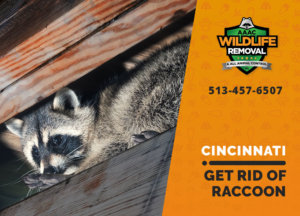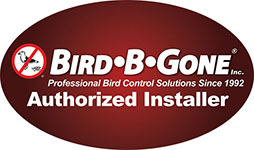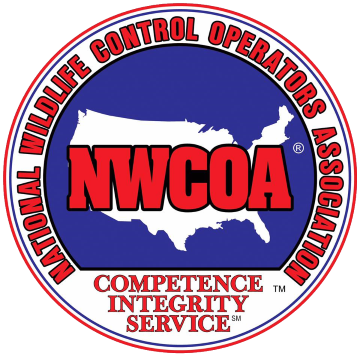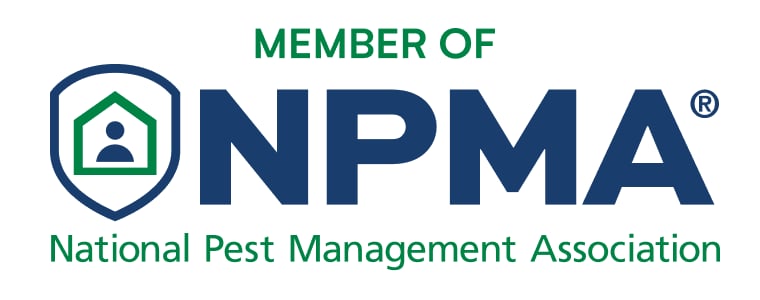Trapping raccoons
One of the most effective ways to evict those masked bandits is by trapping them. Here at AAAC Wildlife Removal, we’ve mastered the art of raccoon trapping, ensuring it’s done humanely and efficiently. But before you set out to tackle this yourself, let’s talk about why DIY trapping might not be the best idea.
First off, raccoons are incredibly smart. If they’ve been trapped before, they’ll likely become trap-averse, making it trickier to catch them the second time around. Plus, the bait you use to lure raccoons can attract other critters like squirrels, skunks, or even your neighbor’s cat! And let’s not forget about the legal red tape – in many areas, you need special permits to trap wildlife. That’s where we come in! Our team at AAAC Wildlife Removal handles all the nitty-gritty details, ensuring a smooth and stress-free process.
So, while trapping might seem like a straightforward solution, it’s best left to the experts at AAAC Wildlife Removal. We’ve got the skills, experience, and permits to get the job done right.
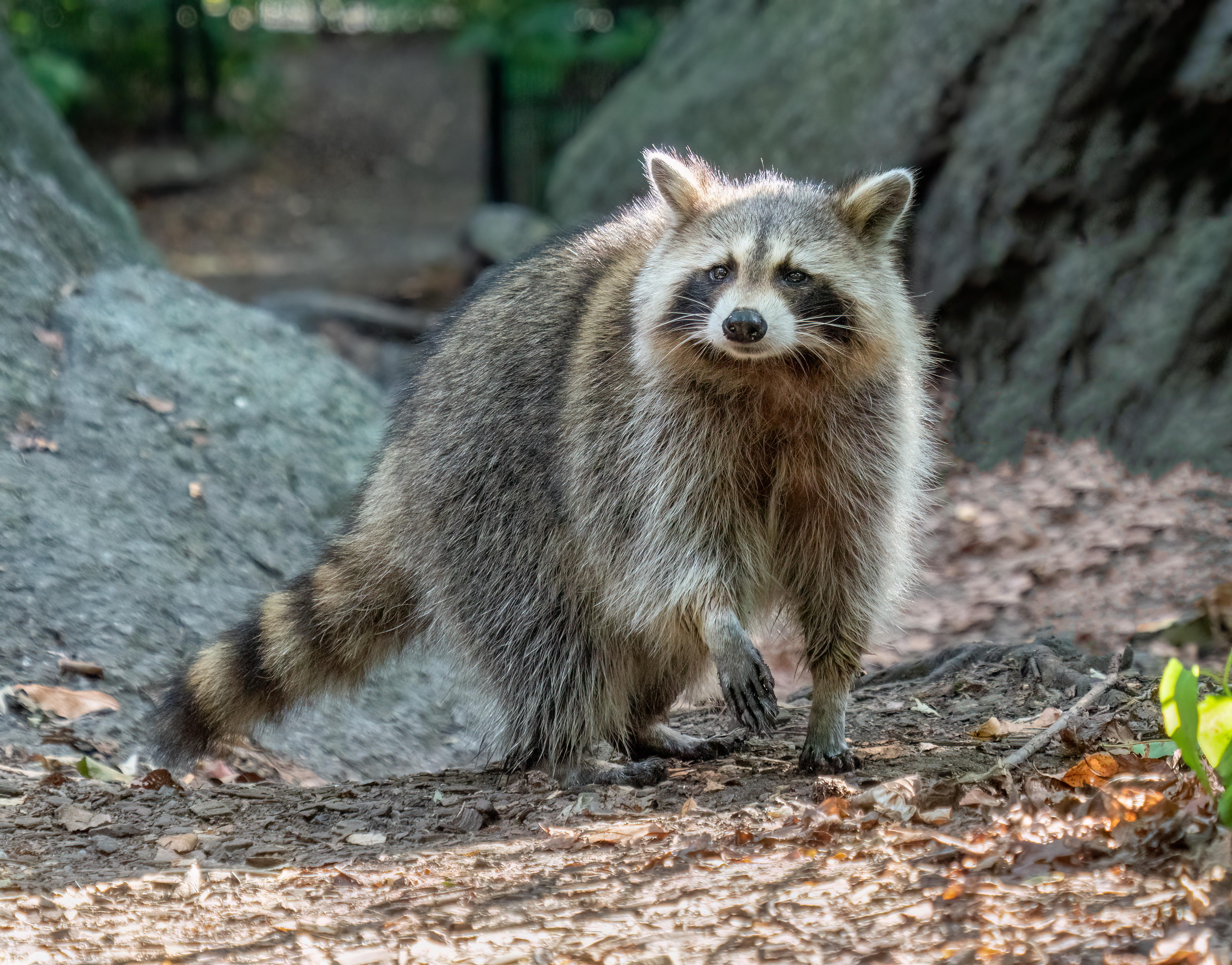
Mothballs and Ammonia
Ah, the age-old trick of using mothballs and ammonia to scare away raccoons – sounds like a quick fix, right? Unfortunately, this method is about as effective as a chocolate teapot. Here at AAAC Wildlife Removal, we’ve seen countless homeowners resort to this technique, only to be disappointed by its results. People have touted mothballs and ammonia for a long time as a proper raccoon deterrent.
Let’s break it down: mothballs and ammonia just don’t pack the punch you need to send raccoons packing. Raccoons are clever critters and aren’t easily fooled by such tactics. In fact, they might just waltz right past your carefully placed mothballs without batting an eye. And ammonia? It might irritate them a bit, but it’s far from a surefire deterrent.
What’s worse, filling your attic with these substances can be downright dangerous. Mothballs contain chemicals that can be toxic to humans and pets, leading to health issues you definitely don’t want. Ammonia fumes are no picnic either and can cause respiratory problems if inhaled. So, while you’re trying to evict raccoons, you might be putting your own family at risk.
Instead of risking your health with ineffective methods, why not opt for solutions that actually work? Our team at AAAC Wildlife Removal knows all the tricks of the trade to humanely and effectively remove raccoons from your home. We focus on methods that ensure your safety and keep raccoons at bay for good. So, ditch the mothballs and ammonia, and let us handle the job with expertise and care.
Loud Noises and Lights
Some folks believe that blasting loud noises or setting up bright lights in the attic will send raccoons scurrying. It’s a nice thought, but unfortunately, raccoons are not so easily spooked. They’ve adapted to living close to humans and have learned to ignore the hustle and bustle of our daily lives. So, turning your attic into a rave with flashing lights and blaring radios isn’t likely to faze them much.
Raccoons quickly learn that the sound of a radio or the glare of a light doesn’t pose any real threat. Once they realize this, they’ll simply find a cozy spot to hide away from the light or noise. If your attic is spacious, there are plenty of nooks and crannies for them to retreat to, making your efforts futile. Plus, if they’re nesting in your soffit box or behind walls, they’re already shielded from your bright light show.
Not only are these methods ineffective, but they can also be disruptive to your household. Imagine trying to sleep with loud noises coming from your attic or having a strobe light show illuminating your ceiling. It’s not pleasant for you, your family, or even your neighbors.
Instead of resorting to these tactics, why not go for a more effective solution? At AAAC Wildlife Removal, we use proven methods to safely and humanely remove raccoons from your property. Our techniques are designed to actually solve the problem, not just annoy your unwanted guests.
Motion-Activated Sprinklers
Now, here’s a gadget that can actually make a difference – motion-activated sprinklers. These nifty devices detect movement and shoot a burst of water at any unsuspecting critter that crosses their path. It’s a humane way to give raccoons a bit of a surprise and discourage them from making your yard their playground.
Motion-activated sprinklers are especially useful for protecting gardens, ponds, and other outdoor areas where raccoons like to roam. The sudden spray of water is enough to startle them and make them think twice about coming back. Plus, these sprinklers are easy to set up and maintain, making them a practical addition to your wildlife control arsenal.
However, while motion-activated sprinklers can be effective in your yard, they won’t do much for raccoons that have already set up camp in your attic or crawlspace. For those indoor invaders, you’ll need a more comprehensive approach.
That’s where we come in. At AAAC Wildlife Removal, we combine tools like motion-activated sprinklers with other proven exclusion techniques to ensure your property is raccoon-free both inside and out. Whether it’s sealing entry points, setting up humane traps, or providing long-term deterrents, we’ve got you covered. So, if you’re looking for a high-tech way to keep raccoons at bay, give motion-activated sprinklers a try – and remember, we’re here to handle the rest!
Exclusion Techniques
Once you’ve managed to evict those pesky raccoons, the next step is making sure they can’t come back. This is where exclusion techniques come into play. At AAAC Wildlife Removal, we’re big fans of the “no entry” approach – because prevention is always better than cure.
Sealing Entry Points
First things first: you need to identify and seal all potential entry points. Raccoons are surprisingly adept at squeezing through small gaps and holes. Common entry points include vents, chimneys, gaps in the roofline, and even unsecured pet doors. Our team will thoroughly inspect your property to find these sneaky access points.
We use high-quality materials that raccoons can’t chew through, such as heavy-gauge steel mesh and metal flashing. Sealing these entry points properly ensures that raccoons can’t re-enter your home once they’ve been removed. And don’t worry – we’ll make sure everything blends in seamlessly with your home’s exterior, so you won’t even notice the barriers.
Raccoon-Proofing Your Home
Beyond sealing entry points, there are other steps you can take to make your home less attractive to raccoons. Secure your trash cans with tight-fitting lids or use raccoon-proof bins. Store pet food indoors and keep outdoor feeding areas clean. By eliminating easy food sources, you reduce the chances of raccoons hanging around your property.
Habitat Modification
Another effective way to discourage raccoons from making themselves at home is by modifying their habitat. This means making changes to your yard and surroundings to make them less inviting to raccoons. At AAAC Wildlife Removal, we can guide you through these steps to ensure a raccoon-free environment.
Removing Food Sources
Raccoons are opportunistic feeders, and if there’s a steady supply of food available, they’ll keep coming back. Properly storing pet food, securing garbage cans, and composting responsibly can make a big difference. Avoid feeding your pets outdoors, and if you must, clean up any leftover food immediately. Bird feeders can also attract raccoons, so consider placing them in areas that are hard for raccoons to reach or using feeders designed to deter larger animals.
Landscaping Changes
Raccoons love to hide in dense shrubs, tall grass, and piles of debris. By keeping your yard tidy and well-maintained, you can reduce the hiding spots available to them. Trim trees and shrubs regularly, especially those close to your home, to prevent raccoons from using them as bridges to your roof. Installing barriers around gardens and ponds can also help protect these areas from raccoon raids.
By making these habitat modifications, you create an environment that’s less appealing to raccoons. Combined with effective exclusion techniques, these steps can significantly reduce the likelihood of raccoon problems. And remember, if you ever need help, AAAC Wildlife Removal is just a call away. We’re here to assist you with all your wildlife control needs, ensuring your home stays safe and raccoon-free.
Natural and Commercial Repellents
While exclusion and habitat modification are crucial steps in keeping raccoons at bay, sometimes you need an extra layer of defense. That’s where natural and commercial repellents come in. These products can help create an inhospitable environment for raccoons, encouraging them to move along to more inviting locales. At AAAC Wildlife Removal, we recommend using these repellents as part of a comprehensive wildlife management plan.
Natural Repellents
If you prefer an eco-friendly approach, natural repellents can be quite effective. Common household items like spices, hot peppers, and vinegar can deter raccoons. For instance, mixing water with hot sauce or cayenne pepper and spraying it around entry points can discourage raccoons from entering. Planting certain herbs and plants, such as peppermint or garlic, can also help. These natural scents are unpleasant to raccoons but safe for humans and pets.
Another natural method is to use predator urine, which can be purchased from garden stores. The scent of a potential predator can be enough to make raccoons think twice about sticking around. However, it’s important to reapply these natural repellents regularly, especially after rain.
Commercial Repellents
For those looking for a more robust solution, commercial repellents are available. These products are designed specifically to repel raccoons and other wildlife. They often contain ingredients like capsaicin, the active component in chili peppers, or predator urine in a more concentrated form. Commercial repellents come in various forms, including sprays, granules, and electronic devices.
When using commercial repellents, it’s essential to follow the manufacturer’s instructions closely. Proper application is key to ensuring their effectiveness. These products can be used around the perimeter of your home, in gardens, and near entry points to keep raccoons at a distance.
Professional Wildlife Control Services
While DIY methods can be effective, there are times when calling in the professionals is the best course of action. At AAAC Wildlife Removal, we offer comprehensive wildlife control services that go beyond simple removal. Our expertise ensures that your raccoon problem is dealt with thoroughly and humanely.
Benefits of Hiring Professionals
Hiring a professional wildlife control service comes with several advantages. First and foremost, we have the experience and knowledge to handle raccoon infestations safely and effectively. Our team is trained to identify the signs of a raccoon problem, locate entry points, and develop a customized removal plan.
What to Expect from a Professional Service
When you hire AAAC Wildlife Removal, you can expect a thorough and professional approach. We begin with a detailed inspection of your property to assess the extent of the infestation and identify all entry points. Based on our findings, we create a comprehensive removal and exclusion plan tailored to your specific needs.
Our team handles all aspects of the process, from setting traps to sealing entry points and providing habitat modification recommendations. We also offer follow-up visits to ensure that the raccoons haven’t returned and that your property remains secure.
Choosing the Right Service Provider
When selecting a wildlife control service, it’s important to choose a provider with a proven track record. Look for companies that are licensed and insured, with positive reviews from satisfied customers. At AAAC Wildlife Removal, we pride ourselves on our professionalism, humane practices, and commitment to customer satisfaction. With us, you can rest assured that your raccoon problem will be resolved quickly and effectively.
By opting for professional wildlife control services, you can address your raccoon issue comprehensively and prevent future problems. Our team at AAAC Wildlife Removal is here to help you every step of the way, ensuring a safe and raccoon-free home.
Legal and Ethical Considerations
When dealing with wildlife removal, it’s crucial to be aware of the legal and ethical considerations involved. At AAAC Wildlife Removal, we emphasize the importance of humane practices and compliance with local regulations to ensure that raccoon removal is conducted responsibly and ethically.
Legal Regulations
Wildlife removal isn’t just about setting traps animals; it also involves adhering to specific laws and regulations. Many states and municipalities have strict rules regarding the trapping of wildlife, including raccoons. These laws are in place to protect both the animals and the environment.
Before attempting any DIY raccoon removal, it’s essential to familiarize yourself with local wildlife laws. In many areas, you need a permit to trap raccoons legally. Failure to comply with these regulations can result in hefty fines and legal trouble. That’s why it’s often best to leave this job to professionals who are well-versed in local laws and have the necessary permits.
Ethical Removal Practices
At AAAC Wildlife Removal, we prioritize humane and ethical removal practices. This means using methods that minimize stress and harm to the animals. Humane traps, safe handling techniques practices are all part of our ethical approach.
Community Involvement and Education
Effective wildlife management often extends beyond individual properties. Community involvement and education play a significant role in preventing and addressing raccoon issues on a larger scale. At AAAC Wildlife Removal, we believe in empowering communities with the knowledge and tools they need to manage wildlife responsibly.
Educating the Public
Public awareness is crucial in managing raccoon populations effectively. By educating homeowners, business owners, and property managers about the best practices for wildlife control, we can reduce the likelihood of raccoon problems. This includes information on proper waste management, exclusion techniques, and habitat modification.
We offer workshops, informational sessions, and resources to help the community understand how to coexist with wildlife safely. Our educational efforts aim to dispel common myths and provide practical advice on preventing and addressing raccoon issues.
Community Action
Working together as a community can significantly enhance the effectiveness of raccoon control efforts. Collaboration with local authorities, wildlife organizations, and neighborhood groups can lead to more comprehensive and coordinated solutions. Community-driven initiatives, such as neighborhood watch programs focused on wildlife control, can make a big difference.
By fostering a sense of shared responsibility, we can create a safer and more harmonious environment for both humans and wildlife. At AAAC Wildlife Removal, we’re committed to supporting community action and providing the expertise needed to tackle raccoon problems collectively.
In conclusion, dealing with raccoons requires a multifaceted approach that includes effective removal techniques, legal and ethical considerations, and community involvement. By following these guidelines and working with professionals like AAAC Wildlife Removal, you can ensure a raccoon-free home and contribute to a more balanced ecosystem. Remember, we’re here to help every step of the way, providing reliable and humane solutions to all your wildlife control needs.
FAQs about Raccoon Removal
We know that dealing with raccoons can raise a lot of questions and concerns. At AAAC Wildlife Removal, we aim to provide clear and comprehensive answers to help you navigate the process with confidence. Here are some of the most frequently asked questions about raccoon removal:
How long does the removal process take?
The duration of the raccoon removal process can vary depending on the severity of the infestation and the specific circumstances of your property. Generally, it can take anywhere from a few days to a couple of weeks. Our team conducts a thorough inspection, sets up humane traps, and monitors the situation closely to ensure all raccoons are safely removed. We also follow up to seal entry points and provide preventative measures to keep raccoons from returning.
What should I do if I see a raccoon during the day?
Seeing a raccoon during the day can be concerning, as these nocturnal animals are usually active at night. However, it doesn’t always indicate a problem. Daytime activity can occur when a mother raccoon is foraging for food for her young. If the raccoon appears disoriented, aggressive, or unusually bold, it might be sick or injured. In such cases, it’s best to contact a professional wildlife control service like AAAC Wildlife Removal to assess the situation and take appropriate action.
How can I prevent raccoons from returning?
Preventing raccoons from coming back involves a combination of exclusion techniques, habitat modification, and regular maintenance. Here are some steps you can take:
- Seal entry points: Ensure all potential entry points to your home, such as vents, chimneys, and gaps in the roofline, are properly sealed.
- Secure food sources: Keep trash cans tightly sealed, store pet food indoors, and clean up any outdoor feeding areas.
- Maintain your yard: Trim trees and shrubs, remove piles of debris, and install barriers around gardens and ponds.
- Use deterrents: Consider using natural or commercial repellents, as well as motion-activated sprinklers, to discourage raccoons from entering your property.

